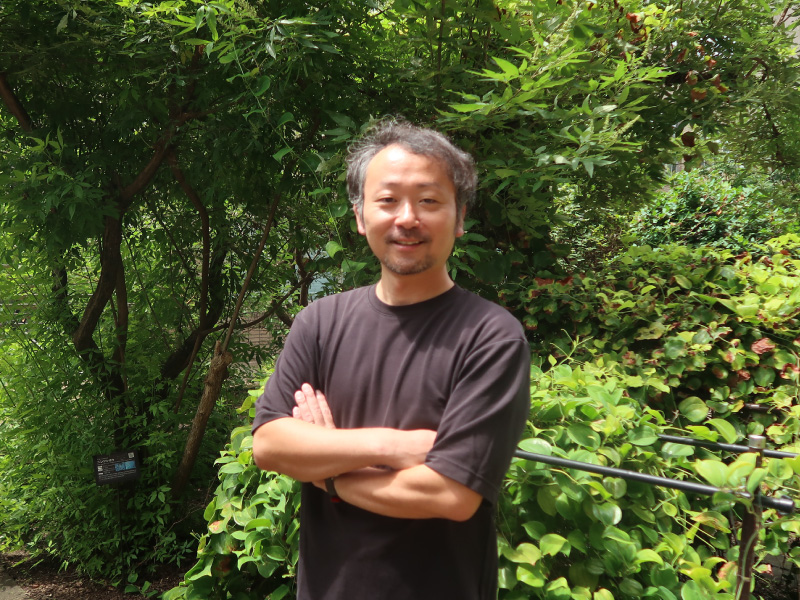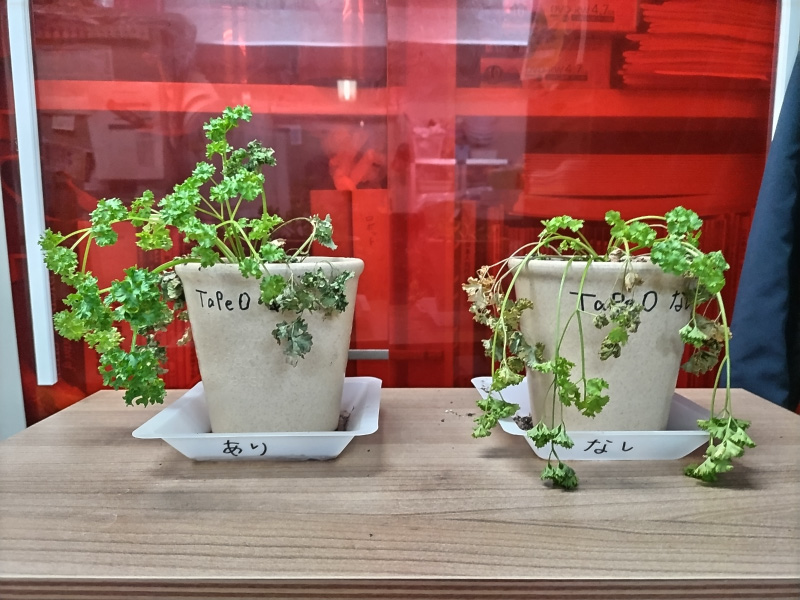Conducting “pharmaceutical research” as well as the development of new materials and health-promoting foods. The keyword is “supramolecules”!


Dr. Taishi HIGASHI
Associate Professor, Department of Physical Pharmaceutics, Faculty of Life Sciences
How can we efficiently transport drugs to human cells?
Please tell us about your research.Dr. Higashi: Simply explained, my research is to create a “courier” that carries drugs inside the body. The research field is called “drug delivery system (DDS)”.
Biopharmaceuticals made from human biomolecules, such as nucleic acids and proteins, are effective only when they enter cells. However, the technology to efficiently deliver such drugs into the cells where they are to be effective is challenging, so researchers around the world are working on DDS research. What I am working on is a system that uses supramolecules to transport anything, whether nucleic acids or proteins, into body cells. I named it “nanorobot” and am doing my best to bring it to market.

What exactly are supramolecules?
Dr. Higashi: A supramolecule is a group of molecules. For example, DNS is a supramolecule, and a cell can also be considered a supramolecule. My research is to use supramolecules for DDS or to use supramolecules themselves as drugs. Molecules are used in any research field, but the characteristic of my research is that I actively incorporate the concept of supramolecules into pharmaceutical science. I have established a new field of “supramolecular pharmacy”.
For example, imagine that the person you are talking to right now suddenly dies. The person has been talking to you, but suddenly loses all human functions. Why does the function of the body suddenly change so drastically, even though the type, number and weight of the molecules that make up the body do not change at all? It is probably because the supramolecular reactions in the body have stopped. The heart works because of the interaction between supramolecules, and the flow of blood and transport of oxygen are also reactions between supramolecules. If we think of the body as a large supramolecular structure, we can think of living as being movement of supramolecules. I believe that this is where new medical treatments will be discovered. My research is based on this idea, and I have gained hints for creating new DDS and drugs.
Developing new materials and health-promoting foods with new possibilities!
I heard that you have discovered new materials in your research.
Dr. Higashi: I have created a gel (a semi-solid or solid substance) (TaPeO Gel) with properties never seen before, using tannic acid and polyethylene glycol (PEG).
I like green tea, and one day, I became interested in tannic acid, which is the astringent component of green tea. Then, I learned from an international paper that if you mix tannic acid and PEG, you can make a gel. However, this only results in a sticky substance like liquid glue. The gel I made is rubbery, and when you pull it while it is still wet, it stretches very smoothly. When it dries, it changes into a material that is light and strong, like plastic. If you put it in hot water, it will become soft again and you can reshape it as you like, but if you put it in hot water again after it has dried it will return to its original shape. It is also a new material that has a self-healing property, so even it breaks if you put it in hot water, it will stick back together again.
Why did you end up with something different from the gel that was known from an international paper?
Dr. Higashi: It is because the PEG mixed with tannic acid was very long. The length of PEG is determined by its molecular weight. There are various lengths, and the one generally used is one with a molecular weight of 40,000 or less. In my research, I also use it as a material for nanorobots.
However, in fact, there was a very long PEG with a molecular weight of 500,000 in my laboratory. It was a PEG with a molecular weight that we never used, so it was probably bought by mistake by someone before and then just stored away. I tried mixing it with tannic acid because it would a waste not to use it, and that’s how we came up with this new material.
Someone else’s mistake led to a new discovery. That is interesting!
Dr. Higashi: I know of other interesting thigs too. In the filed of agriculture, it is said that tannin iron, which is made by inserting nails into tea leaves, etc., improves plant growth. I tried feeding the new material I made to plants. The plants that were fed the gel clearly became healthier. It was found that it had the same effect as tannin iron used in agriculture.

A plant that was given TaPeO (left) and a plant that was not given TaPeO (right)
You are also developing health-promoting foods.
Dr. Higashi: It is the “Chomiryo Don-main (調身料ドンマイン)”. It was developed and is being sold by CyDing Co., Ltd., a startup company that was established by Kumamoto University. I have been involved with CyDing since its establishment, and I am currently also serving as a director. If Mr. Tatsunori Hirotsu, Representative Director of CyDing, is the mother of Don-main, then I am like its father. Our main business is research and development of pharmaceuticals and health-promoting foods, but it really takes a long time to develop a pharmaceuticals product and get it ready for use. That’s why at CyDing we are also focusing on the health-promoting food business, where we can contribute to people with a sense of speed.
The product we developed is called “Chomiryo Don-main”. When you shake it over your food, the cyclodextrin in Don-main helps to prevent the body from absorbing fat. So, it is not just a seasoning, but a “body conditioning” seasoning. It has no taste or smell, so you can shake it over any dish.
What kind of substance is cyclodextrin?
Dr. Higashi: Cyclodextrin is a substance made up of glucose, which is also called an oligosaccharide, in a ring shape. For example, if you mix corn starch with an enzyme, it will turn into cyclodextrin. It is a very safe compound. It is a compound often used in supramolecular chemistry, and in my laboratory, we have been researching cyclodextrin for over 50 years since the time of the previous professor.
Cyclodextrins are also a raw material for supramolecules, and by looking at cyclodextrins, we can study supramolecules very well. I think that the field of supramolecular pharmacy that I established was made possible by cyclodextrins, which connect pharmacy and supramolecular chemistry.
Many researchers in the pharmaceutical sciences are generalists. I want to increase the number of researchers with a background in pharmaceutical sciences.
In addition to DDS research, you are involved in a variety of other interesting research projects, such as the development of new materials and health-promoting food products. Why did you decide to enter the world of pharmaceutical science?
Dr. Higashi: there are no particular reason why I chose to go to the school of pharmacy. My older sister was studying at the School of Pharmacy at Kumamoto University, and I also thought I could get a pharmacist’s qualification there. However, I had always liked research, and from my first year at the School of Pharmacy I had wanted to become a researcher.
Many people go to the School of Pharmacy with the aim of becoming pharmacists, but there are concerns in Japan today that research capability and drug discovery capability are declining. Many people who go into pharmaceutical research are generalists with a broad range of knowledge. There are many people who can do a lot of different things, so I think we need people like that to get involved in drug discovery research (I am just repeating what I have heard...). We need to increase the number of pharmacists, researchers from the school of pharmacy.
What is your idea of “research”?
Dr. Higashi: I am currently busy with childcare every day. Even if I read a book on childcare and try to put the advice into practice, it doesn’t always work out. But I think that studying from books and then thinking hard about what would be best for my child and then I put it into practice. I think that’s research. Research is like turning zero into one. Its necessary no matter what kind of job you do, and to put it another way, you need research throughout your life. I often talk to my students about this.

Related links:
- Researchmap
- Press release "Zero-Waste Synthesis of New Supramolecular Materials With Remarkable Mechanical Properties", September 19, 2023

